I’ve been spending some time with Palladium favorite John Lamb and decided to take notes and turn our visits into a story. I’m publishing it here today. Hope you enjoy it:
You don’t have to look far to find someone anxious to sing the praises of John Lamb, the former Duke Ellington bassist and a musical mentor to several generations of bay area jazz musicians.
Lamb is not a big man physically. But his personality and the sound of his bass are both larger than life.
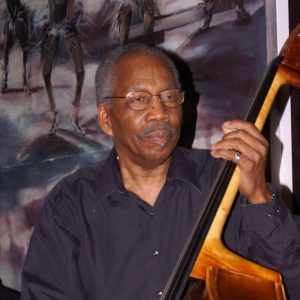
John Lamb
“He is a virtuoso player but more than that, the sound just kind of reflects who John is – swinging and soulful,” says Bob Seymour, longtime jazz programmer and Tampa Jazz Club stalwart. “The music is very physical the way he does it. And the sense of humor is never far away.”
Lamb is a born showman, says Nate Najar, the guitarist who considers Lamb his musical mentor. “He’s also got the biggest sound on the East Coast of the United States and perfect time.”
Najar, who has built a jazz career that has taken him from St. Petersburg to national and international gigs, says Lamb deserves a lot of credit for his success.
“John Lamb is the best thing that ever happened to me,” Najar says.
Lamb is now at a time in life when – if you’ve earned them – lots of honors come your way. And Lamb has earned them. Last year, he was awarded the Jazz Club of Sarasota’s “Satchmo Award” for service to jazz. He’s been celebrated as a “Community Builder” at the annual Studio Honors gala by the St. Petersburg’s Studio @ 620. The Tampa Jazz Club recognized him with a tribute concert last fall. So did the Suncoast Dixielanders. In 2004, The City of St. Petersburg issued a proclamation celebrating “John Lamb Day.”
He was also on the Downbeat listing of “Best Bassists” back in his Ellington days. You don’t get noticed by Downbeat without having the chops, but Lamb says his success is due to more practical things.
“I was always on time. I got along with people. I had no bad habits.” That, Lamb says, “took me a long way.”
On a recent afternoon, Lamb leads me on a tour of his spacious, ranch-style home on the waterfront at the far south end of St. Petersburg. The stand-up basses and other instruments say this is a music house – one he shared with his wife, Paula, until her death in 2003.
The walls also tell of a musical journey.
There’s a photo of him with the Duke Ellington Orchestra in the 1960s, when he toured the world and played on Grammy winning albums. Other photos show John with students from his 30 years as a music educator in St. Petersburg. In others, John’s on the bandstand in clubs and theaters with jazz greats or on-stage as a featured performer with major orchestras.
We end the tour on his screened lanai. Just beyond the screen, a summer storm has stirred up the waters of Tampa Bay, pushing gray, choppy waves against his seawall. Like John, the waves have traveled a long way to get here.
*****
John Lamb’s musical road started 82 years ago in Vero Beach, Florida and took him around the world, then led him back to Florida in 1972 – this time St. Petersburg.
He was born on Nov. 29, the same day as Ellington collaborator Billy Strayhorn.
He took piano lessons as a kid, but his first serious instrument was the tuba. He played with his high school band. He graduated at 16 and the day after his 17th birthday, he was in the Air Force, where he was offered a chance to play a gig on string bass.
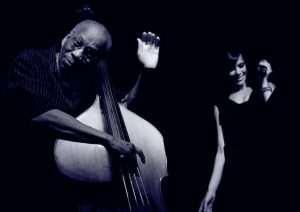
Lamb with Lisa Casalino at the Palladium
“I figured I play what I learned on tuba – the root and the fifth. I taped my fingers and played the job,” he said. And with that decision a bass player was born.
Before long he was playing almost every night at an off-limits club in Great Falls, Montana, mostly blues and R&B, which were hot then.
The place got raided regularly, “but when the cops came, I was on the bandstand.”
On the jukebox, he heard bassist Ray Brown, who was part of the Oscar Peterson Trio. He listened and learned.
He played in Air Force groups with lots of good musicians, including Floyd Werley, who went on to become the chief arranger for the Air Force Band.
Out of the Air Force after three years, he worked other jobs, but kept taking gigs when they came up. He lived in two musical towns – Philadelphia and Boston. In Boston he found himself sitting in with Count Basie and, his jazz idol, Miles Davis.
And he was invited to play in backing bands for some of the biggest names in music – Ella Fitzgerald, Billie Holiday, Carmen McRae, and others. He played in a club run by legendary jazz promoter George Wein in Boston.
Surrounded by the cream of the musical crop, John set a not-so-modest goal for himself: “I decided to try and become the world’s greatest bass player.”
That was a pretty big ambition for a guy who was still working day jobs to pay his rent. But things were about to change.
In 1964, he was living in Philadelphia, making $48 a week as a mail boy in the office of the Acme Food Market chain and playing gigs at night.
Invited to play a society party in New Jersey, he didn’t realize the hostess had set up the party with the intention of recording this young bass player and passing the recording on to her friend, the great bandleader, Duke Ellington.
Not long after the gig, his phone rang. Here’s how John tells the story:
‘”Good evening, Mr. Lamb? This is Duke Ellington.”
I said “Who?”
“Duke Ellington.”
“I said – ‘just a moment please’ – and I went back and told my wife “that’s Duke Ellington on the phone.”
He returned to the phone. “Yes, what can I do for you, Mr. Ellington?”
“Well look here, Mr. Lamb,” Duke said. “We’d like you to come up to New York and play some things with us.’ ”
John landed the Ellington gig because he was willing to take two trains and a taxi – while lugging his bass – from Philadelphia up to the top of the Bronx to a venue called Freedom Land. Another contender wasn’t as resourceful and missed the audition. Duke asked Lamb to play the second show.
With an almost invisible cue from Ellington, the band took off like a train – “and I just jumped on.” When he didn’t like the bass arrangement for one of Duke’s tunes – thinking it was too low and would sound muddy – he reversed the charts. The young man’s talent and courage impressed Ellington.
Not long after, he got a call from Mercer Ellington, Duke’s son and protégé. The job was his if he wanted it.
He asked his wife, knowing that saying yes to Ellington meant a life on the road away from home.
“John,” Paula told him. “You should take the Ellington job – because you might be sorry someday if you don’t.”
If Paula hadn’t encouraged him, he might have passed up the opportunity. At that point in his life, Lamb was more interested in the bebop music of Miles Davis than Ellington’s swinging style, which was out of fashion.
He knows now that his wife was right.
John spent the next three years on the road with the Ellington band. A road that took him to Dallas, Los Angeles, Pittsburgh, Baltimore, New York, London, Tokyo and just about every place in between.
A married man with a young son, Lamb didn’t succumb to any of the temptations dangled before traveling musicians.
“I was so clean, I mean really clean,” Lamb recalls. “I didn’t smoke, drink – coffee, tea, nothing. And I sent money home regularly. I had discovered a deep sense of values and I think that’s what carried me through.”
There are some regrets. Lamb admits he was too young to really appreciate how lucky he was to be working with the jazz legend. And though he’s now a lover of fine wine –he turned down a lot of vintage vino during the tours in Europe.
In those days, Ellington was often invited to perform with symphony orchestras – like the Boston Pops, then led by Arthur Fiedler – and he always took along his rhythm section – Lamb on bass and Louis Bellson on drums.
And during his stint with Ellington he was able to achieve his longtime musical dream – In a 1964 article, Downbeat Magazine listed him as one of the top five bass players in jazz.
*****
Coming off the road, Lamb wanted a more stable life for his growing family, which now included a son, Keith, and a daughter, Michelle. He earned a degree from the Philadelphia Musical Academy (now called the University of the Arts).
During his time with Ellington, Lamb had become friendly with a young trombone player in the band named Buster Cooper – “Buster and I had the same experience” – and when the Lamb family went looking for nice cities where they could raise their children, one stop was in St. Petersburg, where Buster was living.
“St. Petersburg was a good fit,” he said.
He tried some day jobs – selling pianos for a time, then life insurance – but didn’t find the right thing. But while with Prudential, he took courses in managing money and investing, which have served him well over the years.
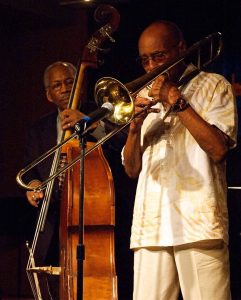
John with Buster Cooper
At night he was meeting musicians and started getting gigs at resorts at the beach.
He landed a gig at the newly restored Don Cesar resort and around the same time, took a job teaching music at Seminole High School. Teaching was the right job. He taught at various public schools – including St. Petersburg College – until his retirement in 1999.
Paula was also an educator, moving up from a teaching job to be a top administrator for Pinellas County Schools.
Teaching provided the stability and the money to raise a family. And the bay area music scene gave John a chance to earn extra money and keep up his chops.
“Since I didn’t smoke or drink, I could do the gig at night and get up the next morning and teach,” he said.
He became part of the house band at the Tierra Verde Resort, where a young promoter named Rob Douglas was bringing in lots of jazz greats.
The list of great players included Herb Ellis, Milt Jackson, Clark Terry, and just about everybody else on the New York jazz scene.
Although they didn’t play together too often, Lamb and Buster Cooper became mainstays of the Tampa Bay jazz scene. Cooper had his own bass player in the family – his brother Steve.
John said the time spent together on the road and the similarities of their life story bonded them “like brothers.”
Although retired from teaching, Lamb keeps a busy schedule as a musician, working mostly in St. Petersburg and Sarasota.
Asked about retiring from music, he quotes Duke Ellington: “Retire to what? This is where everything is. I’m doing what I enjoy doing. That’s it.”
That philosophy, Lamb said, rubbed off on a lot of Duke’s musicians. Certainly it is true for him. As long as he’s having fun – and anyone who has seen him play knows he’s having fun – he will keep gigging.
“I don’t plan to quit. My doctor says, ‘you’re just like a kid.’ And that’s how I feel. So I’m going to keep doing it.”

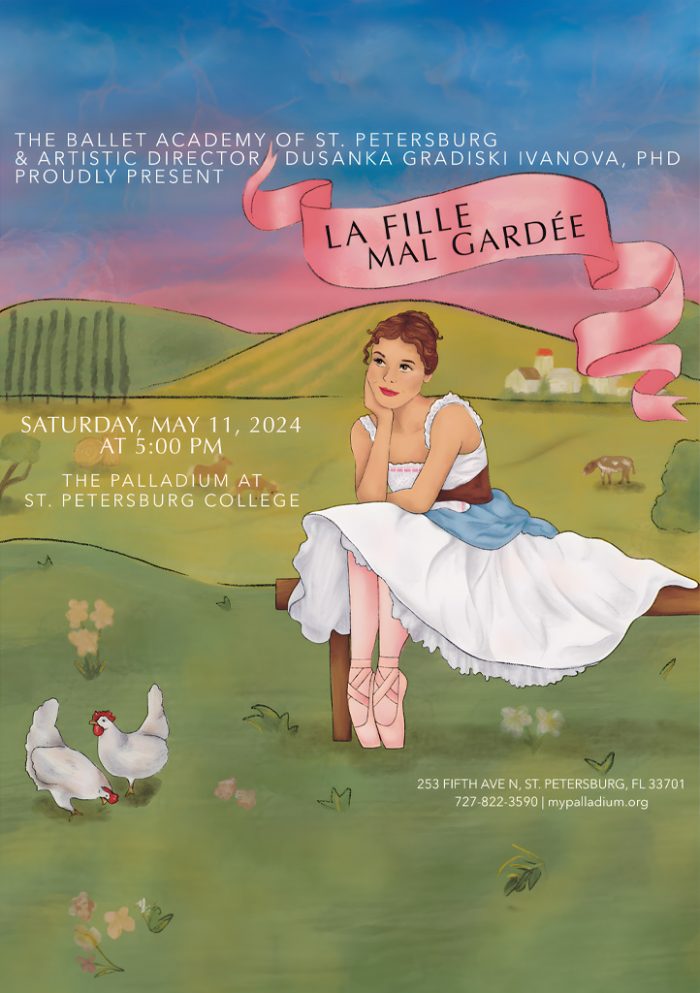
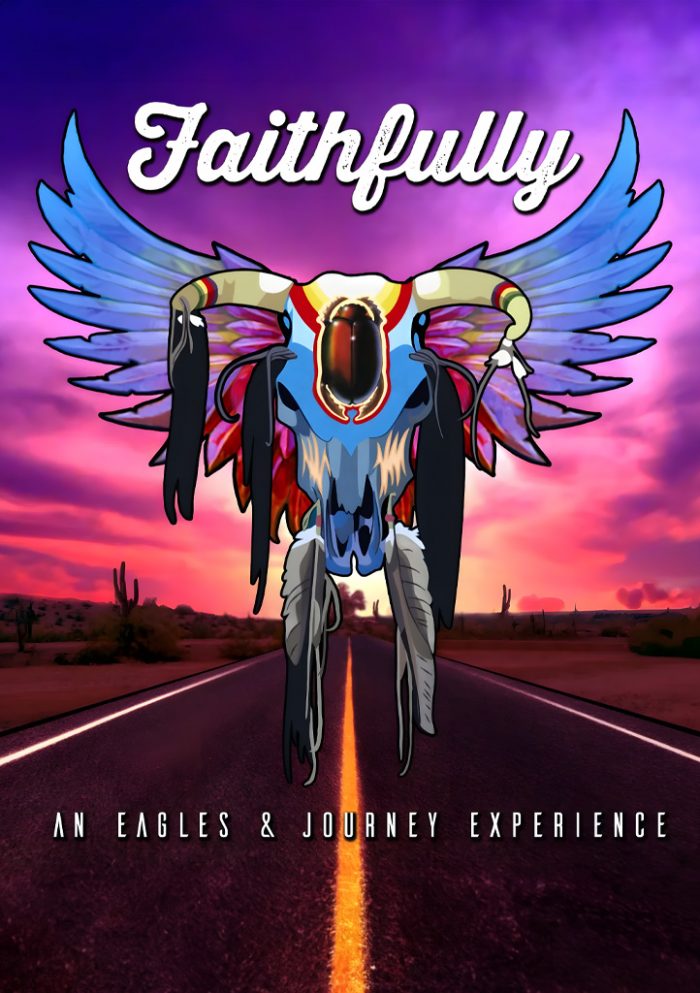
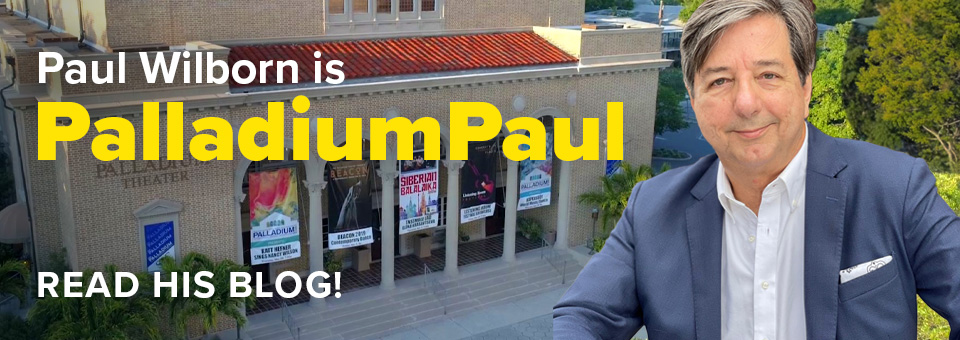


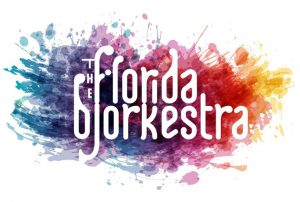

Leave a Reply